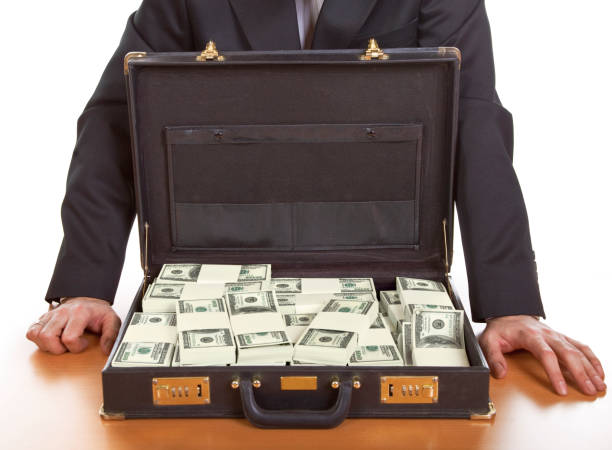Salisbury Beach, a small stretch of sand on Massachusetts’ coast, has gracefully danced through the decades, each era leaving its own indelible mark. This place has seen it all, from its start in the early 1900s, having its glory days in the 1940s, then fast forward to the 1970s and 1980s witnessing a huge addition of two amusement parks, competing with each other to make it even better.
Using interviews with residents and websites about the beach, the Triton Voice decided to take a look at the ups and downs of Salisbury Beach. This week, we look at its golden age, from the 1910s to the 1980s.
Over a century ago, Salisbury Beach was a popular tourist destination. People saw a bright future for Salisbury. The journey began in 1913 with the establishment of Willy’s, an ice-cream store that still stands proudly on the corner of Railroad Avenue after 110 years. In the following year, according to salisburybeachmass.com, the beach welcomed the Broadway Flying Horses, a carousel crafted and set up on Broadway in 1914, marking the first thrilling ride of many to come. These accommodations attracted many. Joe’s, founded in 1919 by Joe and Jennie Haballa, was a popcorn stand providing beach goers with a salty treat.

Tourism began to skyrocket when a company named Dodgem took advantage. In 1920 the first ever bumper cars made by Dodgem were installed on the south side of Broadway. Seven years later the Wildcat, a roller coaster ride also made by Dodgem was installed. An eye appealing building named the Ocean Echo building was auctioned off and remodeled into a music venue called the Frolics as well.
The Frolics, founded in 1940, was a venue which hosted top bands and artists of this time. Between the 40s and 80s the Frolics saw big names Frank Sinatra, Aerosmith, Tony Bennet, and Louis Armstrong were just some of the big names that played at the Frolics between the 1940s and 1980s. The venue, a large pavilion near the shoreline, was adorned with twinkling lights that cast a soft, romantic glow over the dance floor. The building’s entrance had a big pavilion towering over Salisbury Beach reading FROLICS facing away from the beach. Tourists were invited with the large sign lining the building. “It was the time to be there,” said Mr. Kurt Riese, an instructional assistant teacher at THS who remembers the late days of the Frolics in the 1970s and 80s. The atmosphere buzzed with excitement as people gathered under the pavilion’s roof, escaping the warm night air. In the late times of the frolics, Gary Bistany, a local on Salisbury Beach, recalled his younger days. Being surrounded by music, getting the opportunity to set up for bands at the Frolics in the 80s. “People came from all over just to see bands at the Frolics,” said Bistany. It was not just a place to enjoy music and dance; it was a magical setting where people came together to celebrate life, love, and the enchantment of Salisbury Beach.

Built in the 40s and 50s, other venues still stand today. On Memorial Day of 1945, Tripoli Pizza opened a stand at Salisbury Beach where they still sell square, thin-crust pizza that became nicknamed “beach pizza.” Only a year later the neighboring Cristy’s beach pizza made its debut in March, holding a friendly rivalry with Tripoli’s to this day. In 1950, Salisbury Discount House was established on Broadway and is still there today. In 1952, Joe’s popcorn stand changed direction. The popcorn stand was evolved into the arcade locals today know and love, renamed as joes playland still accompanied by the popcorn stand out front. Joe’s Playland was relocated on Broadway, its current location to this day.
In the vibrant 1960s, Salisbury Beach experienced a surge in tourism. This momentum was harnessed through a man named Roger Shaheen. In 1952, Shaheen opened a small amusement park. Shaheen’s Fun-O-Rama, on Ocean Front North was moved into what is now the parking lot of the Blue Ocean Music Hall.

Mr. Fred McAskill, a Triton instructional assistant, shared his memories of Salisbury Beach in the 1970s. In his twenties, he worked at Fun-O-Rama under the guidance of Roger Shaheen for three eventful years. “I worked there for three years,” said McAskill. “The first year, I loved it. The second year, I tolerated it. By the third year, I was ready to move on with life.” McAskill’s responsibilities included overseeing the miniature golf course, and he fondly reminisced about a particular moment when he heard Elvis playing on the sound system during his shift. It continued playing uninterrupted. Only later did he discover that Elvis had passed away, forever linking that significant memory to his time at the beach. McAskill’s eyes sparkled with nostalgia as he flipped through old photographs, each one a portal to the beach’s colorful past. IA chuckled as he recounted their efforts to close up shop before the late-night “drunks’ ‘swarmed in. “There were three different crowds: noontime you had the family crowd, couples rolled in around 5 to 6 p.m., and the “drunks” showed around 9 p.m. That told us we were ready to close,” McAskill chuckled.
Next Week: Part II: 1980s-2000
| ReplyForward |








Ed • Mar 12, 2025 at 4:38 pm
Grampa was Sgt on police. Mom went to school with Roger. Mom would drop all 5 of us older kids 7 up for 4 or 5 hrs. Free rides for us and free clams or fries at Lenas. Best time of my life.Willys chocolates!!!
Android • Jun 25, 2025 at 3:44 pm
Roger was and still is an icon.
Foote’s Fried Clams, the best.
Bernie Cavanaugh? Hit your button….here comes Bernie, etc. ….
The Best Family Entertainment in .
8 am restocking, high noon lunch (Tony’s), roll open the Main Gate & Midway…… SH Jack, Nippie, Bob, Diane, Jimmy P , Jet Pigs, Beal!, Marty, Shaffee’s, Joe’s Playland x-tra thick Chocolate Frappe, …..orange & white…..Mr. Potato…
Frolics, oh my ….